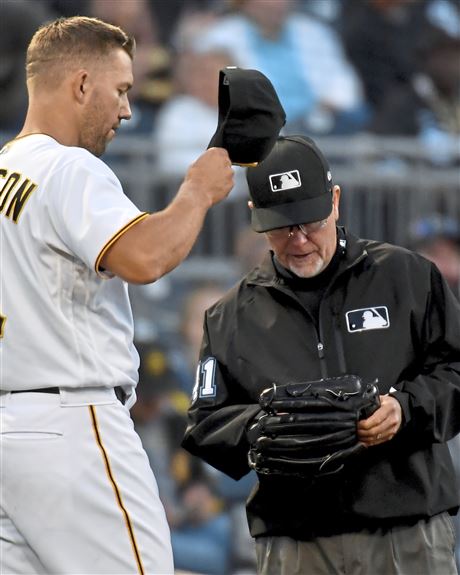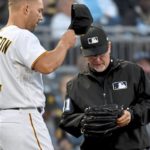Barry Bonds will go down as one of the most prolific cheaters in MLB history, forever. However, players across the league have been vocal about foreign substances, especially lately. Since 2018, Trevor Bauer has been seen as one of the most pitchers on the topic. In 2020, he took the initiative and wrote an article for The Player’s Tribune. He wrote, “Baseball will never address that problem unless it has to, though, because I would guess 70 percent of the pitchers in the league use some sort of technically illegal substance on the ball. It’s just that some organizations really know how to weaponize that and some don’t. So, the Astros are super-advanced analytically and they know how to weaponize it.”
By the way, according to Bauer, MLB only addressed sign-stealing because there was no choice. After rereading Bauer’s thoughts, NGSC Sports went on a field trip through the history of foreign substances in baseball. At the end of the trip, they decide if baseball is handling the use of substances properly.
Foreign substances have been around baseball since the 1902 season. However, evidence of foreign substances traces back to 1876. The very first substance was a human’s spit. Steven V. Rice of the Society for the American Baseball Research told CBS Sports. Meanwhile, pitcher Frank Corridon of the Providence Grays made an accidental discovery: “If you throw a baseball with wet fingertips and a dry thumb so that the fingertips slip from the ball as you release it, the ball will travel straight for a distance and then sink abruptly. Such a throw is difficult to control.” The “spitball” gave way to a new method in 1915 but would return in the 1960s with other substances like sweat, mud, old fishing line, and vaseline.
In 1915, “the shine ball” was born. The “shine ball”, which was founded by Eddy Cicotte, involved rubbing the ball on your uniform to coat the ball with talcum powder. According to baseball historians, the ball would be difficult for someone at the plate to see. That is only one version of the story. Parts of baseball’s history during this time show Ciccotte would nudge the ball with his uniform on one side, and he would cover the ball with dirt on the other side. At this point, you are probably thinking it cannot get any crazier. Well, keep reading, it gets crazier.
In the Batter’s Box was live on NGSC Sports. Jimmy Driscoll, a former MLB player from the 1960s got up from his chair and grabbed a baseball. When he returned to his chair, he explained, “when I played in the ’60s, players would knick the knitted part of the inside of the baseball with a belt buckle,” he said. “That would cause the ball to either rise or sink.” This was the phenomenon of baseball during Driscoll’s time; the modern phenomenon of pine tar began with a batter being robbed of a game-winning home run.
On July 24, 1983, Kansas City Royals third baseman George Brett hit a potentially game-winning home run with his team trailing 4-3 in the top of the ninth, or so he thought. The homer was nullified after Yankees manager Billy Martin noticed an excessive amount of pine tar on the bat. The umpires deemed the bat illegal after they determined the presence of pine tar extended above the bat’s trademark. After an appeal, American League president Lee MacPhail ordered the game needed to be completed. Ultimately, luck was on the Royals’ side, and they were victorious 7-5. After seeing the consequences of Brett’s actions, you would think a lesson was learned, but instead, the phenomenon raged on; it was a ticking time bomb, and when the bomb exploded the MLB world blew up.
In Game 3 of the 2006 World Series, Kenny Rogers refueled the fire when he was caught with what appeared to be a pine tar rosin combination. The umpires requested Rogers remove the substance, regardless of what it was, so he did. However, he stood his ground after the game. “It was dirt and rosin put together. That’s what happens when you rub it up. I just went and wiped it off. I didn’t think it was an issue. After the first inning, it was fine. I felt I was pretty comfortable after that,” Rogers told ESPN. Jim Leyland also defended his pitcher; he operated under the belief it was just dirt. Former Cy Young Award winner Rick Sutcliffe explained the difference between rosin and pine tar. “When it’s hot out and you’re sweating, the rosin bag is there to help give you more grip, the same effect, and give it a tacky substance. But tonight, the rosin bag isn’t going to be much help with the cold weather,” Sutcliffe told ESPN Magazine after the game. Well, once Rogers got caught you could not battle the cold with pine tar; so, a new substance needed to be formed. Fast forward 15 years, baseball finds itself in the midst of a new problem, the banning of grip enhancers.
Until recently, grip enhancers, apart from pine tar, were considered legal. However, MLB needed to do something about seven total no-hitters. Ultimately, they banned all grip enhancers, and umpires must check the glove periodically. Almost immediately after the new rule came out, MLBPA rep Zackary Britton spoke out, “I don’t have any issues with trying to clean up the game and level the playing field,” Britton told thespun.com. “I think there’s a better way, and we’d be willing to sit down and talk about that, but we haven’t been engaged from my knowledge.” He also made sure to call out commissioner Rob Manfred. He said, “I’d love to hear Manfred answer questions and not just players,” Britton said. “If you’re the head of a sport, I think part of the job description is to answer the questions and speak to the media occasionally. You see it throughout the other sports. It’s frustrating for the players that we haven’t heard from him yet.” Now, you have heard from the players and may be wondering, what does NGSC Sports think?
Since when are professional sports dictated by the numbers? These sports are supposed to be about the fans and trust me, no-hitters never get old. When fans go to an MLB game, they long to see an ace shut the opposition down. Frankly, it would be no surprise if other position players have found a way to take advantage of the game. Manfred opened a can of worms that did not need to be opened.
Author Profile






